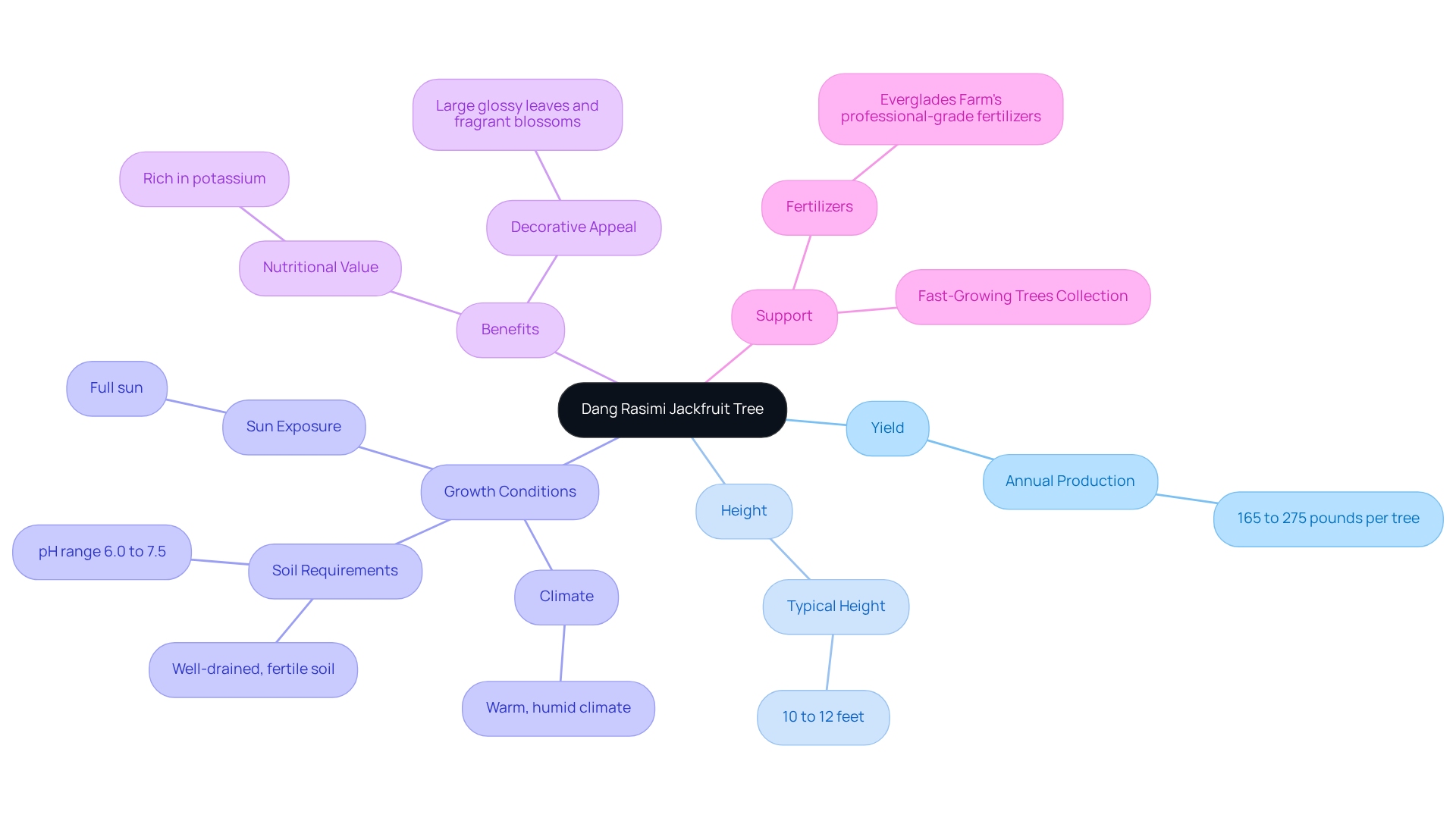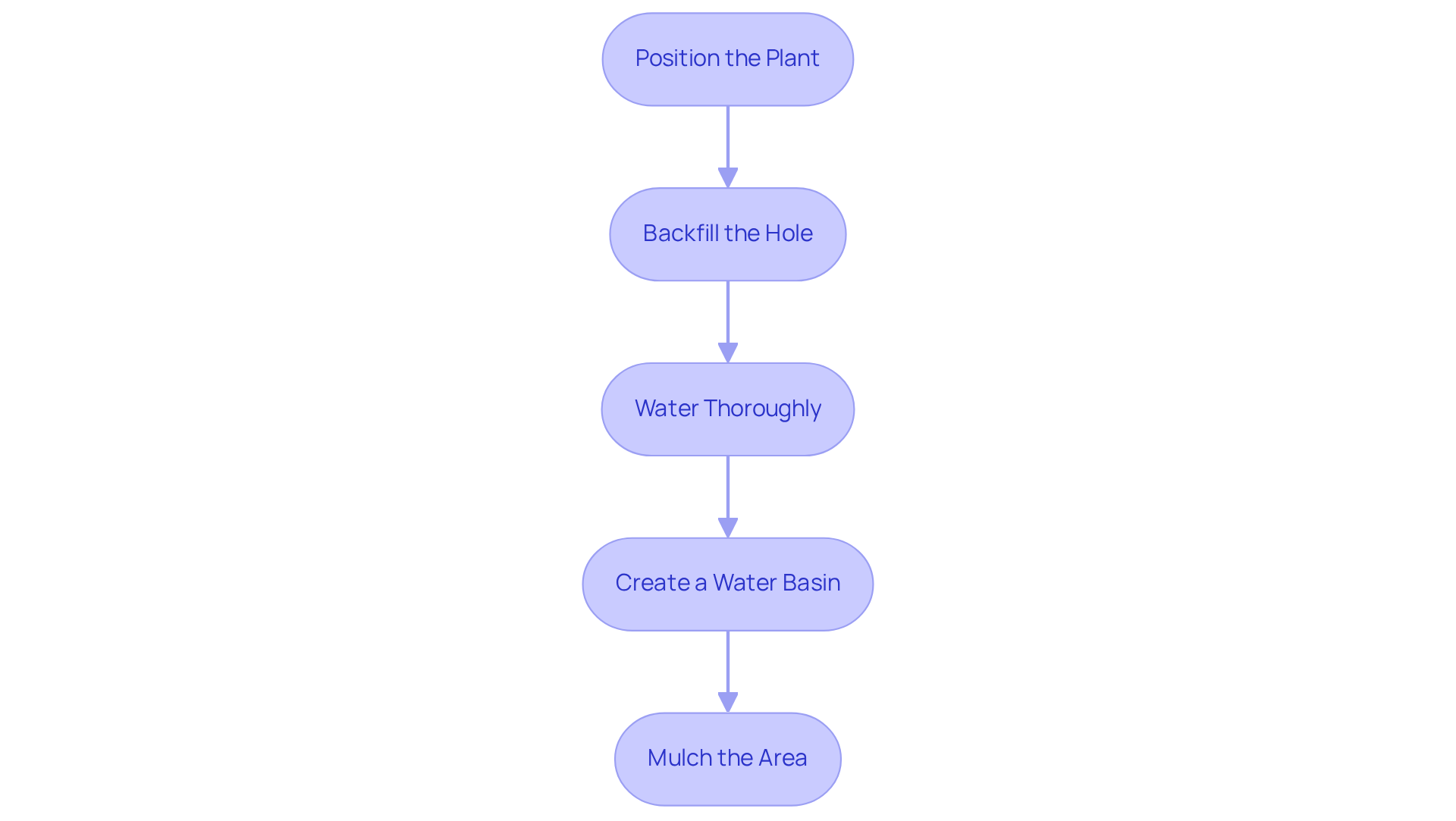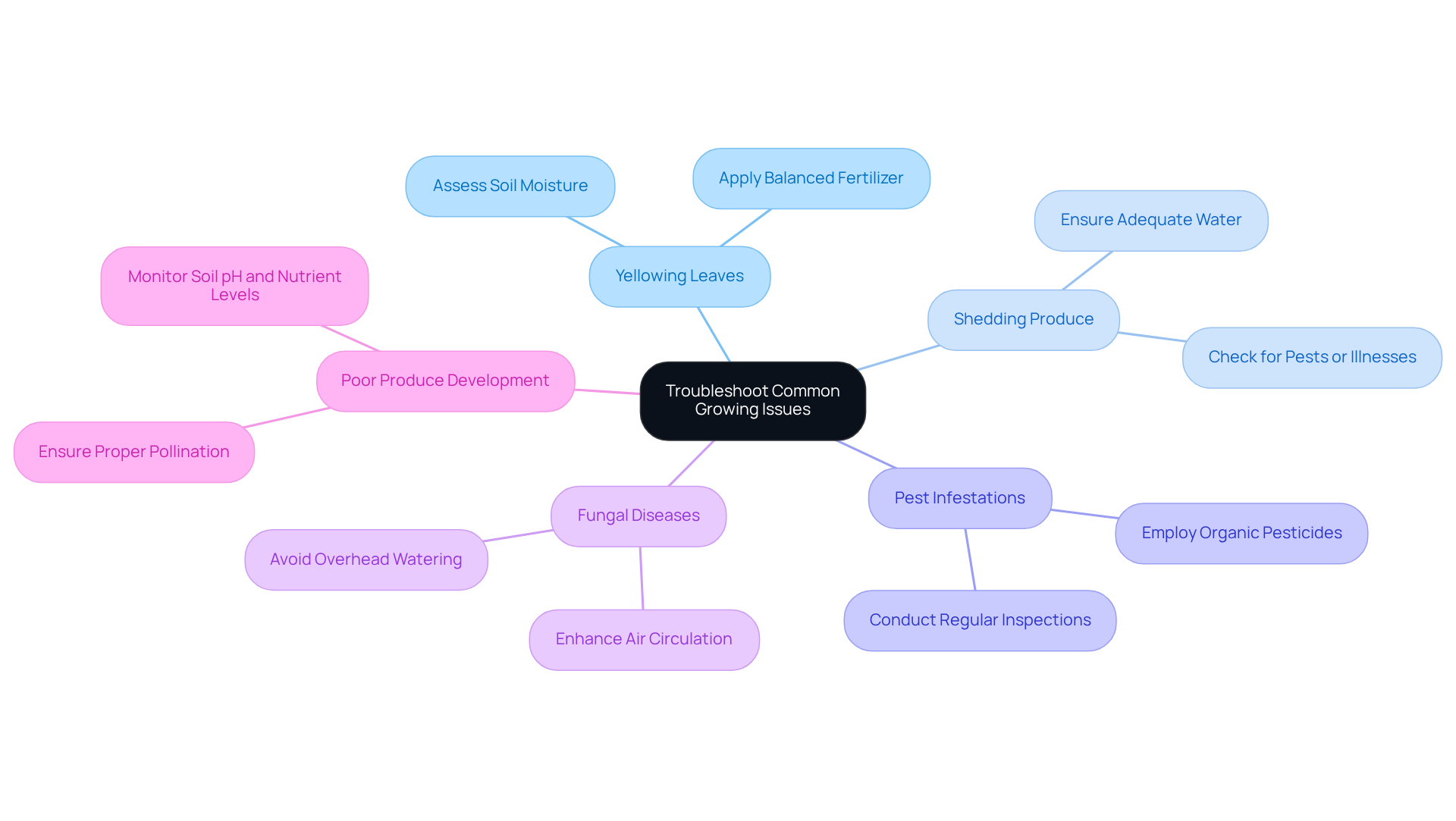The Dang Rasimi jackfruit tree is a remarkable semi-dwarf variety originating from Thailand. It offers an impressive yield, producing up to 275 pounds of fruit annually, making it a stunning addition to any garden. This guide outlines essential steps for successfully cultivating this tropical gem, covering everything from preparing the ideal planting site to providing ongoing care and addressing common issues. However, challenges may arise, such as unexpected growth setbacks or underdeveloped fruits. By exploring these concerns, gardeners will be empowered to cultivate a thriving jackfruit tree and reap its numerous benefits.
Thinking about growing a Jackfruit Tree in your garden?
Explore a Dang Rasimi Jackfruit Tree at Everglades Farm - shipped directly from Florida.
1. Understand the Dang Rasimi Jackfruit Tree
The Dang Rasimi jackfruit tree, a robust variety from Thailand, is renowned for its remarkable output of medium to large produce, yielding between 165 to 275 pounds per tree each year. This semi-dwarf variety typically reaches a height of 10 to 12 feet, making it an excellent choice for home gardens.
It flourishes in warm, humid climates with full sun exposure and requires well-drained, fertile soil with a pH range of 6.0 to 7.5. Understanding these growth requirements is essential for ensuring the plant's health and productivity, as it can begin producing fruit within just 3 to 4 years under ideal conditions.
Additionally, the plant's large, glossy leaves and fragrant blossoms enhance its decorative charm, adding beauty to any garden area. Furthermore, this tropical fruit is rich in potassium, which may help lower blood pressure and reduce the risk of heart disease, making it a nutritious addition to your garden.
To support your gardening efforts, consider utilizing Everglades Farm's professional-grade fertilizers, which can help optimize growth and yield. Moreover, the dang rasimi jackfruit tree is included in Everglades Farm's Fast-Growing Trees collection, designed for home gardeners seeking quick-yield tropical greenery.

2. Prepare Your Garden for Planting
To prepare your garden for planting a Dang Rasimi jackfruit tree, it is essential to follow these steps:
-
Choose the Right Location: Select a sunny spot in your garden that receives at least 8 hours of direct sunlight daily. Ensure the area is sheltered from strong winds to protect the young plant. This location will provide the necessary light for optimal growth.
-
Test and Amend the Ground: Conduct a soil test to determine pH and nutrient levels, aiming for a pH between 6.0 and 7.5, which is ideal for these plants. Incorporate organic matter, such as compost, to enhance soil fertility and improve drainage, promoting healthy root development. This preparation ensures that the plant has the nutrients it needs to thrive.
-
Clear the Area: Remove any weeds, rocks, or debris from the planting site. This step is crucial to prevent competition for nutrients and water, allowing the dang rasimi jackfruit tree to thrive. A clean area will facilitate better growth conditions.
-
Dig the Planting Hole: Dig a hole that is twice as wide and as deep as the root ball of the plant. This allows for easy root expansion and guarantees proper drainage, which is essential for the plant's growth. Adequate space will help the roots establish themselves effectively.
-
Water the Soil: Before planting, thoroughly water the hole to ensure the soil is moist but not waterlogged. This creates a welcoming environment for the roots, encouraging strong establishment and growth. Proper moisture levels are critical for the initial phase of planting.
By following these steps, you can create an ideal environment for your dang rasimi jackfruit tree, setting the stage for a fruitful and vibrant addition to your garden.

3. Plant the Dang Rasimi Jackfruit Tree
To successfully plant your Dang Rasimi jackfruit tree, follow these essential steps:
-
Position the Plant: Begin by carefully removing the plant from its container, taking care to disturb the roots as little as possible. Place the tree in the center of the hole, ensuring that the top of the root ball is level with the surrounding ground. Proper positioning of the root ball is crucial for healthy growth, as it allows the roots to establish effectively.
-
Backfill the Hole: Next, gently fill the hole with the excavated earth, lightly tamping it down to eliminate any air pockets. Avoid compacting the soil too tightly, as this can restrict the roots' expansion and hinder water uptake.
-
Water Thoroughly: After backfilling, irrigate the plant deeply to help settle the soil around the roots. Newly planted dang rasimi jackfruit trees should be watered 2-3 times a week to maintain adequate moisture levels, which is vital for their healthy growth.
-
Create a Water Basin: Form a small basin around the base of the plant, approximately 2-3 feet in diameter, to retain moisture during dry spells. This basin will help ensure consistent hydration for the young tree.
-
Mulch the Area: Finally, apply a layer of organic mulch around the base of the plant, keeping it a few inches away from the trunk. This practice helps maintain soil moisture, control weeds, and regulate temperature, contributing to the overall vitality of the plant.

4. Care for Your Jackfruit Tree
To ensure the health and productivity of your dang rasimi jackfruit tree, implementing specific care practices that promote optimal growth and fruiting is essential.
Watering: Consistent soil moisture is crucial, especially during dry spells. Water deeply once a week, and increase to twice a week during prolonged dry periods. Allow the top inch of soil to dry out between waterings. Be cautious of overwatering, as the dang rasimi jackfruit tree is sensitive to waterlogged conditions, which can lead to root rot.
Fertilizing: Fertilizing the dang rasimi jackfruit tree involves applying a balanced fertilizer, such as 10-10-10, every 6-8 weeks throughout the growing season. Begin fertilization in early spring when new growth emerges, and start granular applications in May, continuing every other month until the dry season. Adhere to the manufacturer's guidelines for application rates to ensure optimal nutrient uptake.
Pruning: Pruning the dang rasimi jackfruit tree involves annual trimming that is necessary to shape the plant and promote healthy growth. Ideally, pruning should occur after the harvest, eliminating no more than one-third of the branches. Remove any dead or diseased branches and thin out crowded areas to enhance air circulation, which is vital for preventing fungal diseases.
Pest and Disease Management: Regular examinations for signs of pests or diseases on the dang rasimi jackfruit tree, especially mealybugs and fruit flies, are important. Employ organic pest control methods, such as neem oil, to effectively manage infestations. Ensuring good air circulation around the plant is vital for minimizing the risk of fungal infections.
Mulching: A layer of organic mulch should be maintained to retain moisture and suppress weed growth. As the mulch breaks down, it enriches the soil with nutrients, promoting the overall health of your fruit-bearing plant.
5. Troubleshoot Common Growing Issues
To effectively troubleshoot common growing issues with your Dang Rasimi jackfruit tree, consider the following strategies:
Yellowing Leaves: This symptom often signals nutrient deficiencies or overwatering. Assess the soil moisture levels; if the soil is dry, applying a balanced fertilizer can help restore nutrient levels. Research shows that nutrient deficiencies can lead to significant decreases in crop yield, underscoring the necessity of proper fertilization.
Shedding Produce: Young jackfruit plants may naturally shed produce as they develop their root systems. Ensure the plant receives adequate water and nutrients. If produce drop persists, check for possible pests or illnesses that may be affecting the plant's health. Gardening specialists suggest that effectively managing produce drop can enhance yield retention and overall tree health.
Pest Infestations: Common nuisances such as jackfruit stem borers and flies can present considerable dangers. Employ organic pesticides or insecticidal soap to manage these infestations effectively. Regular inspections for pest activity are crucial for early detection and intervention. Statistics indicate that untreated pest infestations can result in a 30% decline in produce quality.
Fungal Diseases: Symptoms such as leaf spots or produce rot may suggest fungal infections. Combat this by enhancing air circulation around the tree through pruning excess foliage and avoiding overhead watering, which can increase humidity and promote fungal growth. Research indicates that fungal diseases can diminish crop yield by up to 50% if not managed promptly.
Poor Produce Development: If the produce appears small or misshapen, it may result from inadequate pollination or nutrient deficiencies. Ensure the plant is well-fertilized, and consider hand-pollinating blossoms to enhance yield and quality. Experts recommend monitoring soil pH and nutrient levels to optimize fruit development.
By implementing these practices, you can enhance the health and productivity of your dang rasimi jackfruit tree, ensuring a fruitful harvest.

Conclusion
Successfully cultivating a Dang Rasimi jackfruit tree can transform a garden into a vibrant oasis while providing a bountiful harvest. This semi-dwarf variety thrives in warm, humid climates and offers impressive yields along with significant nutritional benefits. By understanding its growth requirements, preparing the garden thoughtfully, and implementing proper care techniques, gardeners can ensure their jackfruit trees flourish and produce fruit within just a few years.
Key steps include:
- Selecting the right location for planting
- Preparing the soil
- Following a consistent care regimen that encompasses:
- Watering
- Fertilizing
- Pest management
Addressing common issues such as yellowing leaves, shedding produce, and pest infestations is crucial for maintaining the health of the tree and optimizing yield. Each of these practices contributes to the overall success of growing a Dang Rasimi jackfruit tree.
Embracing the journey of nurturing a Dang Rasimi jackfruit tree not only enhances the beauty of a garden but also promotes sustainability by providing a nutritious food source. For those looking to embark on this rewarding endeavor, thorough preparation and attentive care are essential for achieving a fruitful harvest. Begin planting and enjoy the myriad benefits this remarkable tree has to offer!
Transform Your Garden with a Dang Rasimi Jackfruit Tree!
Start your journey to a vibrant oasis and bountiful harvest with Everglades Farm’s premium tropical trees.
Frequently Asked Questions
What is the Dang Rasimi jackfruit tree?
The Dang Rasimi jackfruit tree is a robust semi-dwarf variety from Thailand, known for its high yield of medium to large jackfruits, producing between 165 to 275 pounds per tree each year.
What are the ideal growing conditions for the Dang Rasimi jackfruit tree?
This tree flourishes in warm, humid climates with full sun exposure, requiring well-drained, fertile soil with a pH range of 6.0 to 7.5.
How long does it take for the Dang Rasimi jackfruit tree to start producing fruit?
Under ideal conditions, the Dang Rasimi jackfruit tree can begin producing fruit within just 3 to 4 years.
What are the additional benefits of the Dang Rasimi jackfruit tree?
Besides its fruit yield, the tree features large, glossy leaves and fragrant blossoms, enhancing garden aesthetics. The fruit is also rich in potassium, which may help lower blood pressure and reduce heart disease risk.
How can I prepare my garden for planting a Dang Rasimi jackfruit tree?
To prepare your garden, choose a sunny location with at least 8 hours of direct sunlight, test and amend the soil for pH and nutrients, clear the area of weeds and debris, dig a planting hole twice the width and depth of the root ball, and water the soil before planting.
Why is soil testing important for planting the Dang Rasimi jackfruit tree?
Soil testing is important to determine pH and nutrient levels to ensure they fall within the ideal range of 6.0 to 7.5, which supports healthy growth and root development.
What should I do to ensure the planting area is suitable for the Dang Rasimi jackfruit tree?
Clear the planting area of any weeds, rocks, or debris to prevent competition for nutrients and water, and ensure the soil is moist before planting to encourage strong root establishment.





0 comments